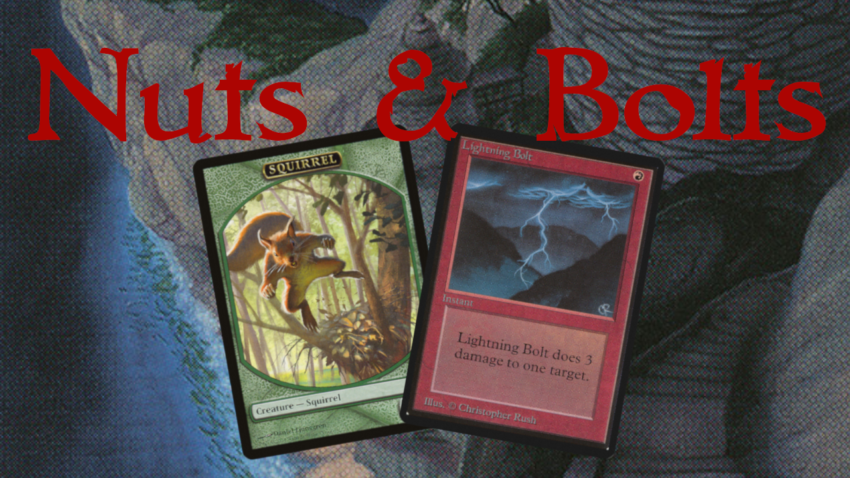I imagine that there will be a wide range of reactions to this title, from “Duh, of course…”, to “What? They are?”, to “Well, actually…it all depends.” I may or may not convince you that proportions of the Hurloon Minotaurs are superior to the Balduvian Barabarian hordes, but hopefully by the end, we all will have a better understanding of one of Magic’s most important and overlooked mechanics, basic power and toughness.
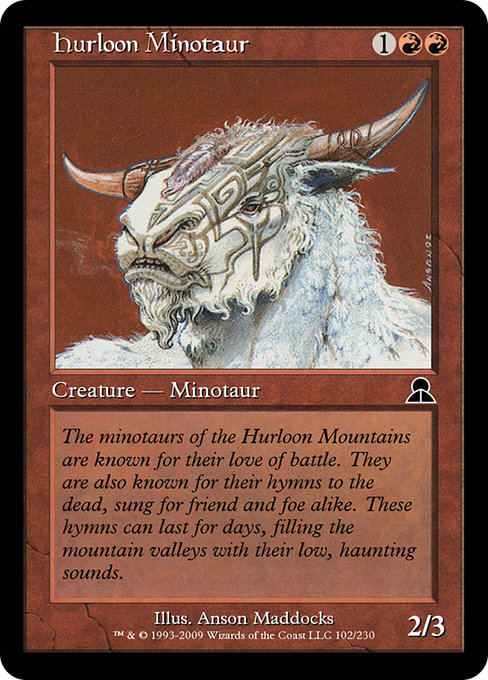
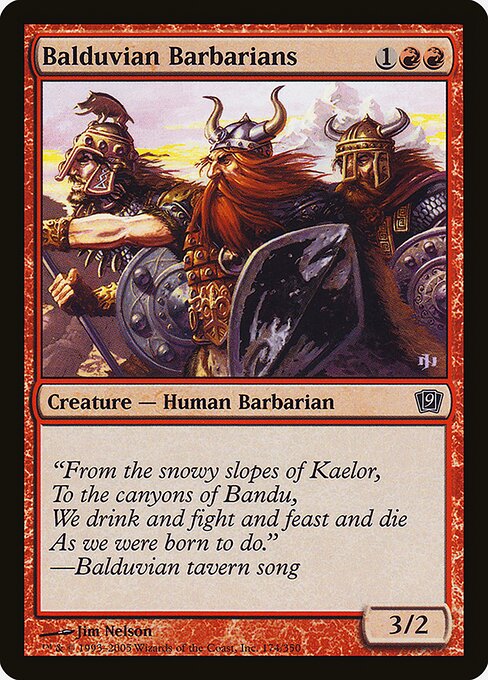
It’s easy for a new player to understand that a grizzly bear is better than either a squire or a goblin piker, but how should they compare the two lesser cards? There is nothing intrinsically better about a point of power over a point of toughness. They trade off with each other in combat, and they both have their advantages and disadvantages, but any experienced player will know that the 2/1 is far more useful in limited. The game designers are not trying to hide this from us, since in current sets, 1/2s are available for one mana, while the going rate for a 2/1 is two mana.
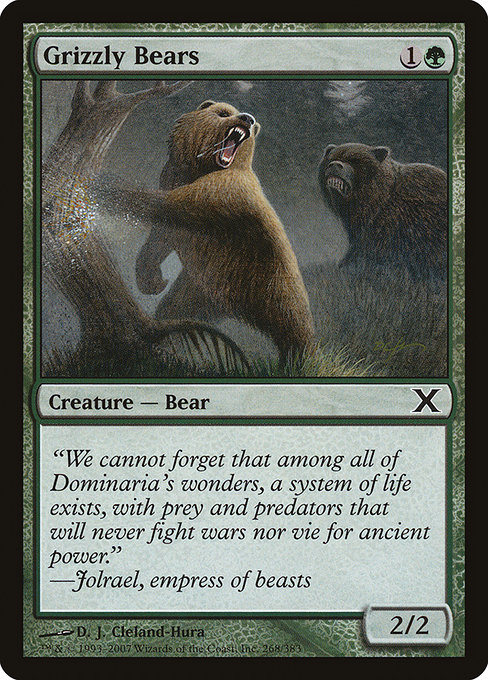
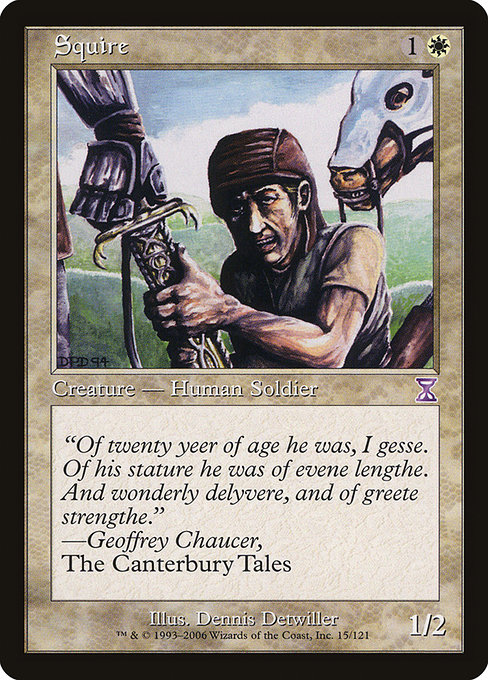
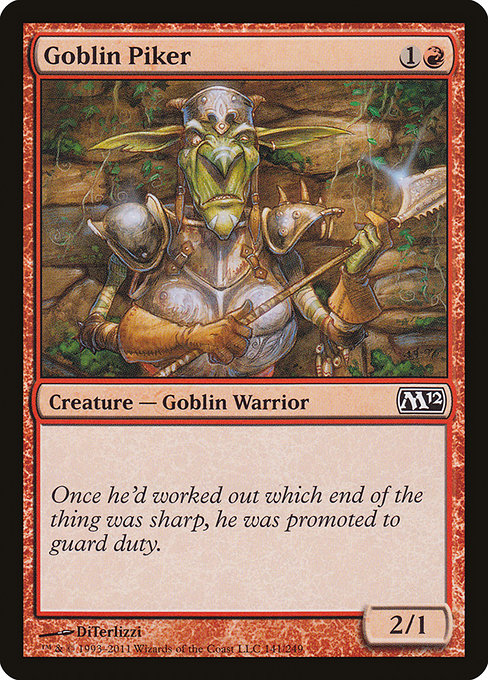
The value of a creature isn’t determined by adding up its power and toughness or by any other mathematical formula. It is determined by how it interacts with other creatures on the battlefield, and how quickly it can kill your opponent absent other creatures. To illustrate this, let’s look at all the permutations of power and toughness to see how our two candidates measure up.
vs. an empty board
The 2/1 is better. It deals twice the damage.
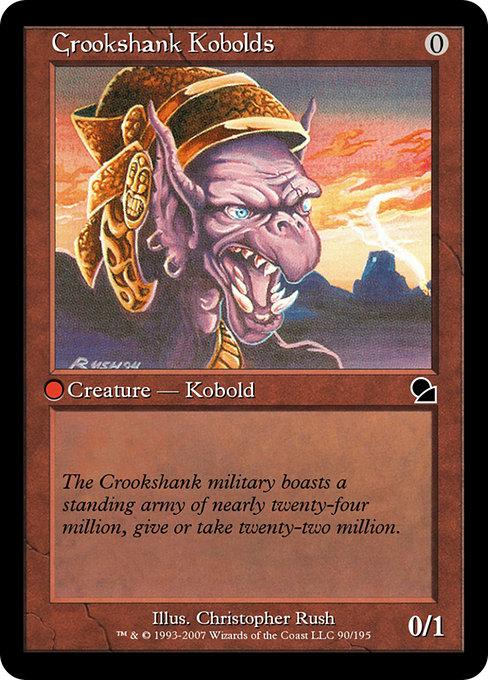
vs. a 0/1
They are both equal. They both can attack past it.
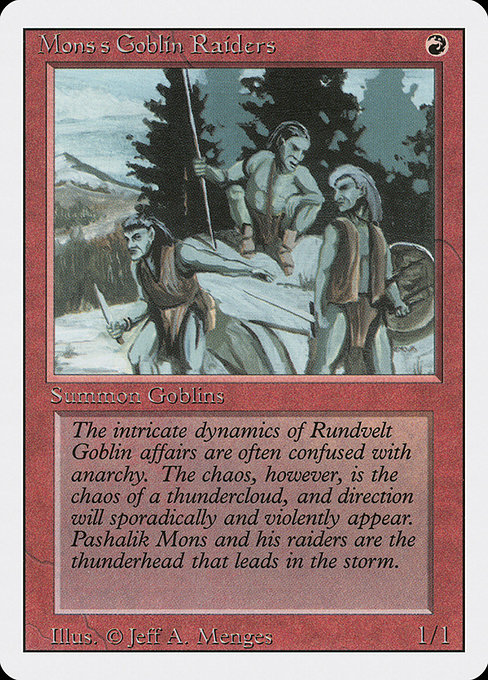
vs. a 1/1
The 1/2 is better. It can attack past or block the 1/1 favorably, while the 2/1 trades off.

vs. a 2/1
They are both equal. They trade off.
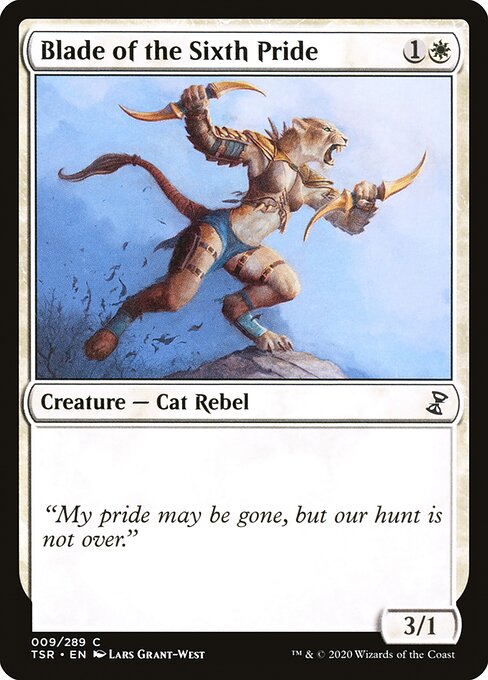
vs. a 3/1 (or greater power)
Likewise. They trade off.
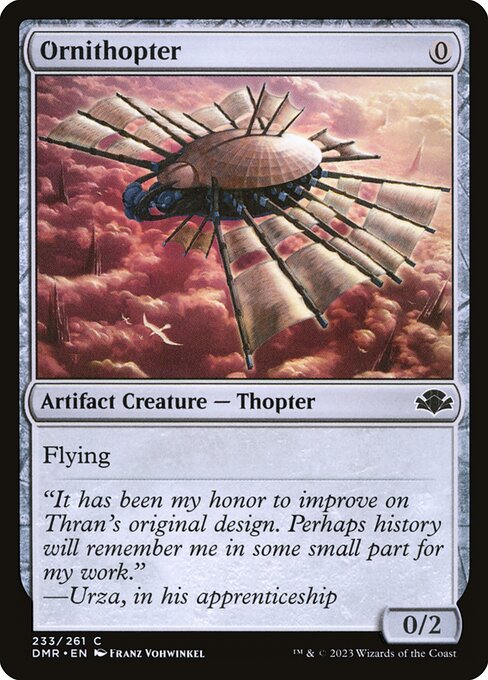
vs. a 0/2
The 2/1 is better. It attacks past the 0/2 while the 1/2 bounces off.

vs. a 1/2
They are both equal. They trade off.

vs. a 2/2
The 2/1 is better. It trades with the 2/2, while the 1/2 cannot attack into or block it.
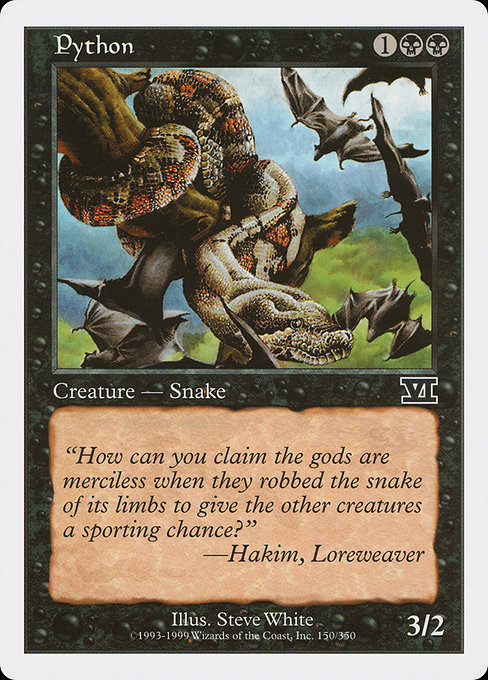
vs. a 3/2 (or greater power)
The 2/1 is better. It trades off with the 3/2, while the 1/2 cannot.
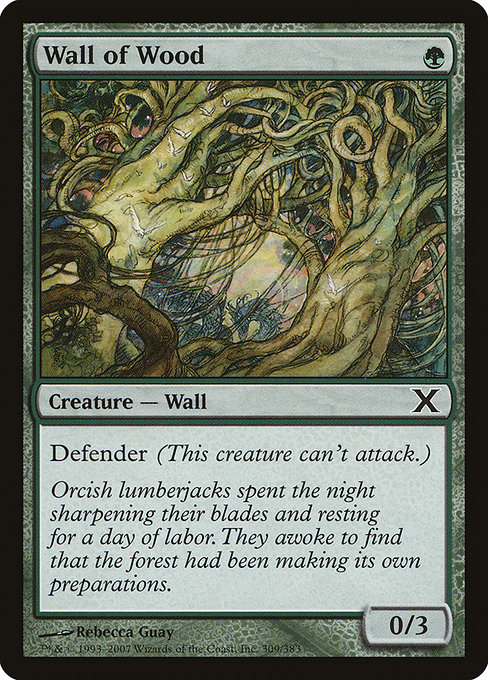
vs. a 0/3 (or greater toughness)
They are both equal.
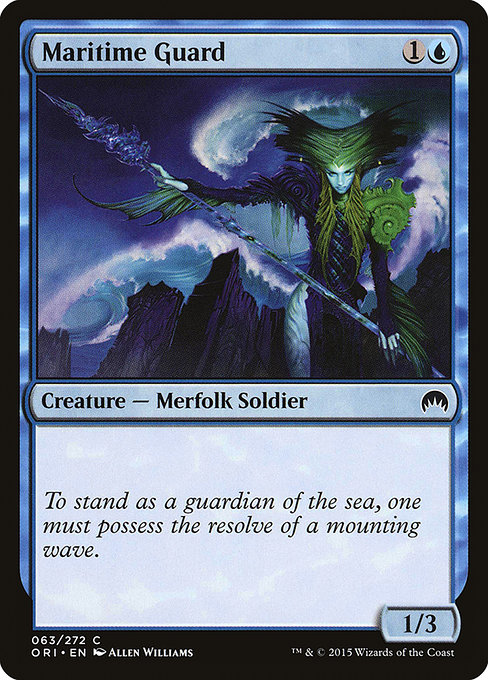
vs. a 1/3
The 1/2 is slightly better. It bounces off the 1/3, while a 2/1 can hold off a single 1/3 by threatening to race. Two 1/2s can attack into a 1/3, whereas two 2/1s cannot. Similarly, a 1/3 can attack past a 2/1 if there is another 1/3 back to block.
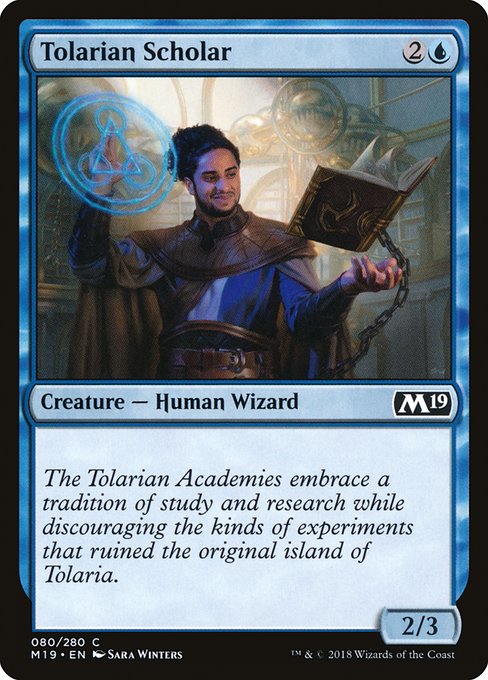
vs. a 2/3
They are both inadequate to deal with a 2/3. The 2/1 has a slight advantage if the opposing player chooses to race.
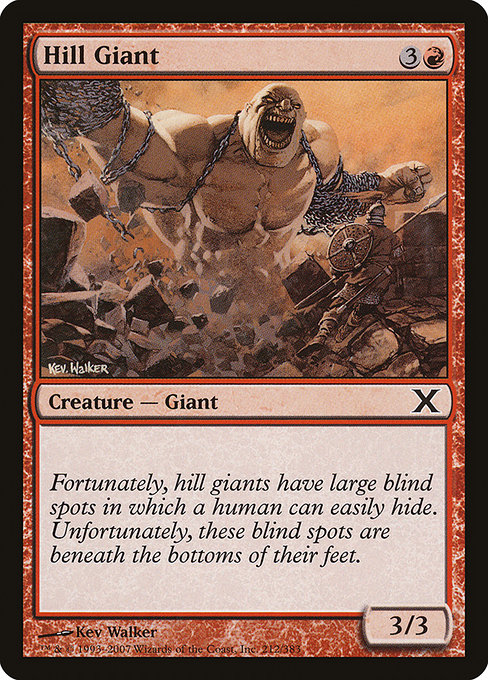
vs. a 3/3 or larger creature
They both fail to measure up. The 2/1s are slightly better in multiples, since they can attack around a bigger blocker for more damage (chump attacking to trade off for damage), and two 2/1s can double block a 3/3 where two 1/2s cannot. On the other hand, anyone who has played Spider Spawning knows that 1/2s in very high numbers are excellent blockers, but these are not your typical limited board states.
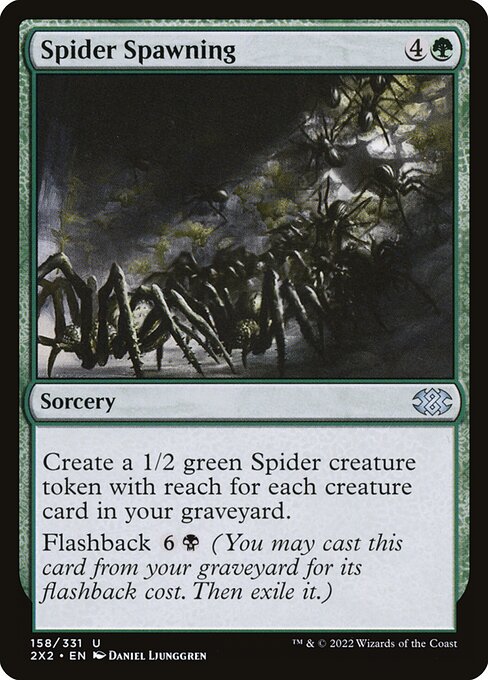
Now that we have gone through every possible combination of vanilla creatures facing off against each other across the battlefield, how do we determine which candidate comes out on top? As we said from the beginning, they both have their advantages and disadvantages, so how do we weight all of the possible interactions to say that one is clearly better than the other? This is actually simpler than it sounds, since you just weight them by how often you expect to be in each situation. If we had the statistics from Magic Online or Arena, we could put some real probabilities out there, but for now, lets just use our experience.
Which of these cases do you think is more common in an average game of limited?
- Your opponent has no creatures on board, or they have an 0/2, a 2/2, or a 3/2 on board.
- Your opponent has a 1/1 on board.
From my experience the first set of options are much more common, and since those are the situations where a 2/1 is better than a 1/2, the 2/1 is on average a better card. They do get punished by 1/1 tokens, so in environments where 1/1 tokens are abundant, the gap between the two cards will diminish, but it will rarely vanish or swing the other way. Now let’s quickly do the same exercise with a 2/3 and a 3/2. This time I’ll summarize the creature interactions in a table.
| Opposing P/T | Empty Board | 1 Toughness | 2 Toughness | 3 Toughness | 4 Toughness |
| 0 Power | 3/2 is better | 3/2 is better | |||
| 1 Power | 3/2 is better | ||||
| 2 Power | 2/3 is better | 2/3 is better | 2/3 is better | ||
| 3 Power | 3/2 is better | ||||
| 4 Power | 3/2 is better |
So here we can see that 2/3s match up better against 2/1s, 2/2s, and 2/4s, while 3/2s match up well against 0/3s, 1/3s, 3/3s, and 4/3s. So which creatures do you think your opponents will have more of in their decks? Of course, it varies, but I am still confident that most opponents will have more 2/1s and 2/2s in their decks than 3/3s or 4/3s. That is because the 2/1s and 2/2s fill up the largest slot in a good mana curve, the 2-drop slot. Even at three and four mana, 3/3s and 4/3s are not always that common, as many of those spell slots are used on removal, small fliers, card draw, and ramp to get you to your five and six mana finishers. Therefore, a three mana 3/2 can expect to trade down on mana with a two mana 2/1 or 2/2 much more often than it will trade up on mana against a four mana 4/3. If your opponents consistently trade their less expensive spells for your more expensive spells, eventually you won’t have anything left to counter their expensive spells, and you will lose.
https://magic.wizards.com/en/articles/archive/beyond-basics/how-build-mana-curve-2017-05-18
In addition to mana efficiency, 2/3s can also provide a subtle form of card advantage, in that a single 2/3 blocker can hold off multiple 2/2 attackers as long as your life is reasonably high. This lets you leverage your life total as an additional resource to affect the board state. When your 2/3 blocker is holding back two 2/2 attackers, you could imagine that it gains an additional ability (0 mana, Pay 2 life: Destroy target attacking creature).
Maybe I have convinced you that a 2/3 is better than a 3/2, or maybe not, but what should be the takeaway from this for your next draft? Always take 2/3s over 3/2s? Of course not! The vast majority of creatures that you draft will have evasive, defensive, or synergistic abilities that will completely change their valuation, but there are still some advantages you can gain from our discussion.
- Make sure that your deck has plenty of ways to block or trade off with your opponents 2-drops, whether they are your own 2-drops, or a three mana 2/3. You don’t want to waste your removal on their cheapest and most common creatures.
- Remember that the value of your creatures changes based on the situation, so when you are taking those 13th and 14th picks out of the pack, if you are taking creatures that probably won’t make your final deck, favor creatures that have varied stats over ones that you already have multiple copies of. Even if those creatures are marginally worse, it will give you flexibility in adjusting your matchups and mana curve post sideboard.
- Pay attention to which creatures your opponents are playing and use your sideboard to create favorable matchups. Against an opponent with eight 2/2s, a 2/3 could be the best card in your deck, and if your opponent is running four Yargles, side in those 3/2s and own them.
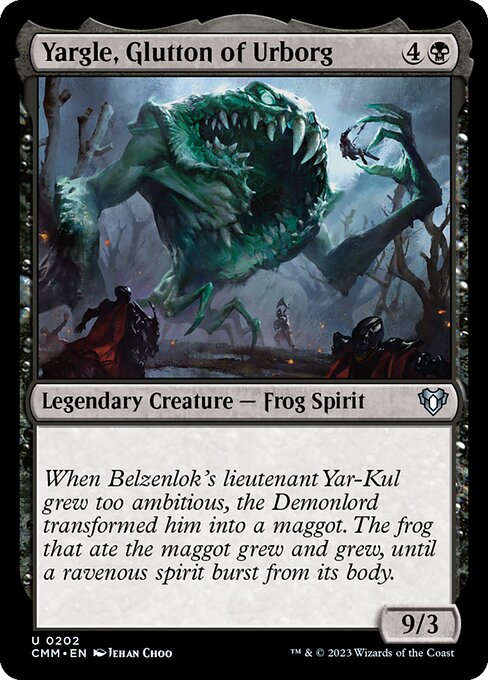
Thanks and good luck!

